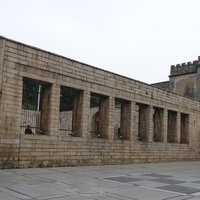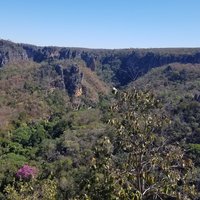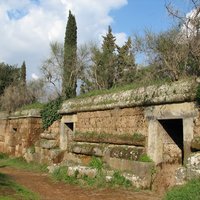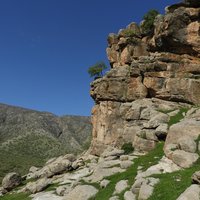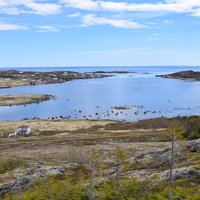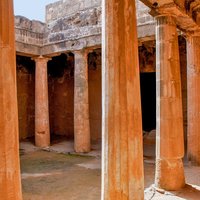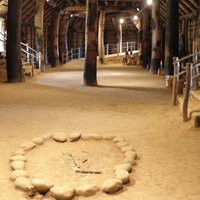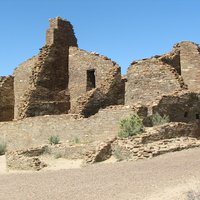Connected Sites
-
Site of Maritime Trade Office & Site of Southern Clan Office: "In archaeological surveys and excavations In 2019, real-time protective measures were adopted to cover remains after they were exposed." The same goes for the sites of the Dehua Kilns and the Xiacaopu Iron Production Site. (Nomination file, p. 401, 404)
-
-
The necropolis of Monterozzi at Tarquinia: "To this day over 6000 tombs have been detected. Once excavated and documented, most of these have been usually reburied, because of the objective difficulty of safeguarding their conservation once they are exposed to the elements." (Nomination file, p. 22)
-
"The excavated parts within the caves have been backfilled, and protected with wooden walkways." (AB Ev)
-
"Archaeological investigations, beginning as early as the 1930s, have cumulatively advanced the physical protection at Aggersborg, Fyrkat and Trelleborg – by covering and marking the eroded remains of ramparts(...)." At Aggersborg, Fyrkat and Trelleborg, "the original remnant of circular rampart remains buried beneath a protective and stable layer of earth and turf that was placed as a partial reconstruction to mark out the structure in the landscape for conservation and interpretive purposes." (Nomination file, p. 263-264, 266)
-
"The archaeological features of the Red Bay Basque Whaling Stations are located both underground and underwater within the boundaries of the property. They have been reburied and stabilized as part of ongoing conservation measures.........All of the more than 3,000 original components of the vessel were systematically reburied on the Harbour bottom." (Nom File).
-
The Mosaic of "Orpheus and the Beasts was discovered in 1984 and underwent a major preservation exercise before being put on public display under a shelter in 1989. In 2004 it was decided that the shelter was inadequate, it was dismantled and the mosaic reburied until such time as an improved sheter could be designed and constructed. The mosaic remains buried.
-
Laetoli Tracks. "The footprints have been Reburied" (2010 AB Eval). In fact the original deliberate reburial of the Tracks by Mary Leakey wasn't a success and has led to improvements in burial technique and subsequent monitoring for such sites.
See www.getty.edu
-
"Archaeological remains have been inventoried and documented, and the excavated sites have been backfilled to protect the historic fabric from further damage." (AB Ev)
-
"In general, the excavated features at the 17 components have been recorded and reburied under 30 to 200 centimetres of protective soil, with a root screen to prevent root intrusion." (AB Ev)
-
"After tombs have been excavated, the pit is backfilled using the soil and stones removed from it. Mounds are rebuilt over the burial to the height and circumference of the original construction, as confirmed by the archaeological research. Grass is planted over the burial mound and in the surrounding areas to prevent soil erosion." (AB ev)
-
The 2013 Periodic Report stated - "The 1989 plan called for backfilling, or reburial of certain portions of the standing architecture to promote long term preservation". See this article for a description of the "Rebusial progam" at Chaco sites and a discussion of pros and cons for the reurial approach.
See www.nps.gov

